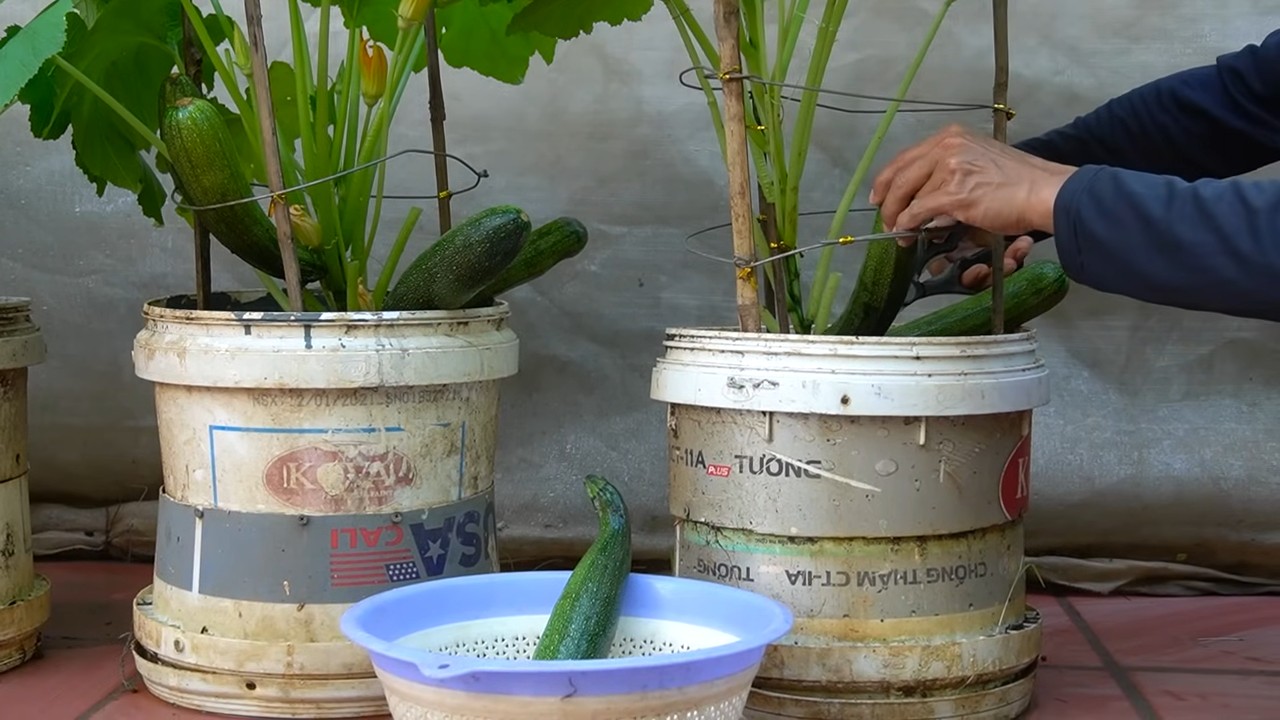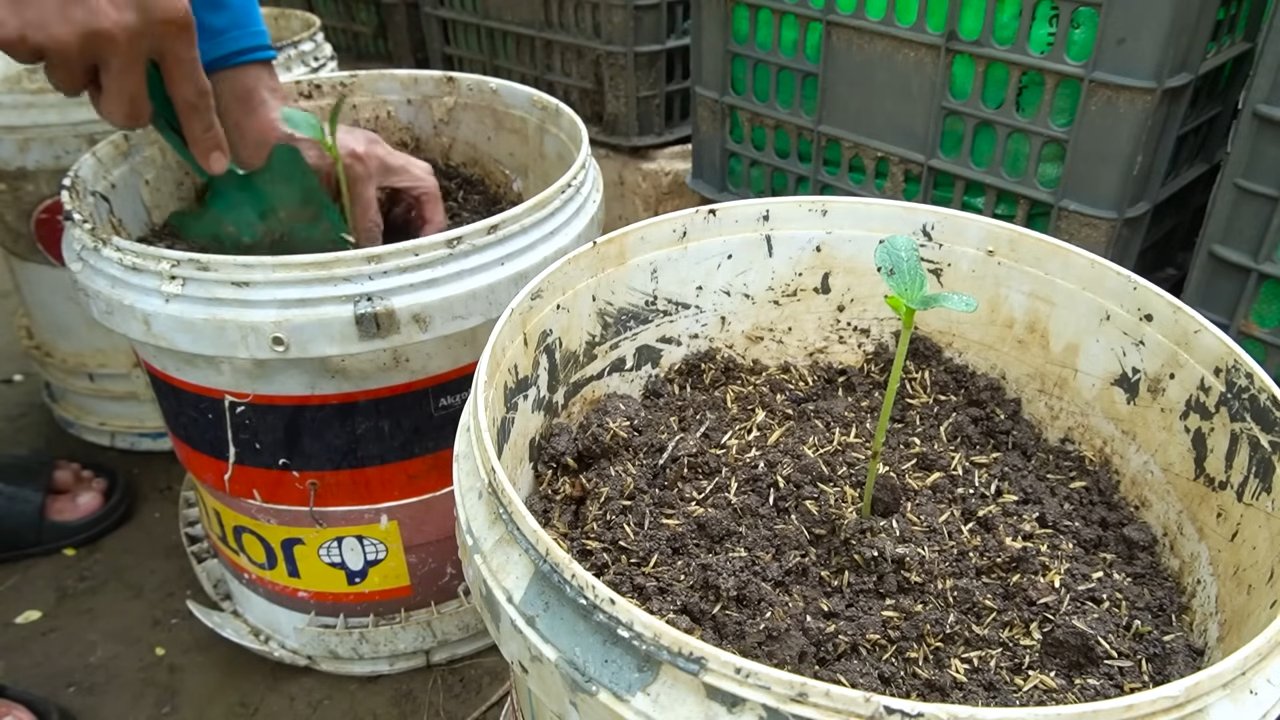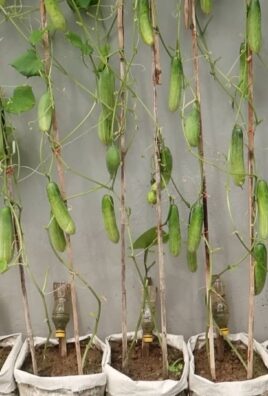Zucchini Growing Tips: Ever dream of a garden overflowing with fresh, vibrant zucchini, ready for everything from delicious zucchini bread to savory summer salads? I know I have! But let’s be honest, sometimes those sprawling zucchini plants can be a bit… temperamental. You’re not alone if you’ve struggled with blossom end rot, powdery mildew, or just a general lack of fruit.
For centuries, zucchini, a relative newcomer to the gardening scene compared to ancient crops like tomatoes or beans, has been a symbol of summer abundance. Originating in the Americas, it quickly spread across the globe, becoming a staple in Mediterranean cuisine and beyond. But even with its relatively recent history, mastering zucchini cultivation can feel like an age-old challenge!
That’s why I’ve put together this guide packed with easy-to-follow zucchini growing tips and DIY hacks that will transform your garden into a zucchini paradise. Forget complicated techniques and expensive equipment. I’m sharing simple, practical solutions that anyone can implement, regardless of their gardening experience. Whether you’re battling pests, struggling with pollination, or simply want to maximize your yield, these tips will help you unlock the secrets to a bountiful zucchini harvest. Let’s get growing!

Zucchini Cultivation: My Ultimate DIY Guide for a Bountiful Harvest
Hello dear garden friends! I’m so excited to share my best tips and tricks for growing zucchini with you today. Zucchini are not only incredibly versatile in the kitchen but also relatively easy to grow, even if you are a gardening novice. With a little planning and the right tricks, you can look forward to a bountiful harvest. Let’s get started!
The Preparation: The Key to Success
Before we start the actual planting, good preparation is the be-all and end-all. Here are the most important points you should consider:
- The right location: Zucchini love the sun! Choose a location that receives at least 6-8 hours of direct sunlight per day. A sunny spot ensures strong plants and a rich harvest.
- The perfect soil: Zucchini are not particularly demanding, but well-draining, nutrient-rich soil is ideal. Improve your soil with compost or well-rotted manure to prepare it optimally.
- The right time: Zucchini are sensitive to frost. So wait until there is no more danger of frost before planting them outdoors. In most regions, this is from mid-May to early June. You can also start the plants indoors to give them a little head start.
- The choice of variety: There are countless zucchini varieties, from the classic green to yellow or striped versions. Find out which varieties thrive well in your region and which ones you like the best.
Step-by-Step Guide: Planting Zucchini Like a Pro
Now it’s time to get down to business! Here is my detailed guide on how to successfully plant your zucchini:
- Starting seeds (optional): If you want to start your zucchini indoors, begin about 3-4 weeks before the last expected frost. Fill small pots with seed-starting mix and place 2-3 seeds about 2 cm deep in each. Water the soil gently and place the pots in a warm, bright place. Once the seedlings have germinated, remove the weakest shoot, leaving only the strongest one.
- Preparing the soil: Whether you are sowing the seeds directly into the bed or planting pre-grown plants, the soil must be well prepared. Loosen the soil thoroughly and remove weeds. Work in compost or manure to enrich the soil with nutrients.
- Planting or Sowing: If you have pre-grown plants, dig a hole that is slightly larger than the root ball. Carefully place the plant in it and fill the hole with soil. Gently press the soil and water the plant thoroughly. If you are sowing the seeds directly into the bed, place 2-3 seeds per planting spot about 2 cm deep in the soil. Maintain a distance of about 60-90 cm between plants, as zucchini need a lot of space.
- Watering: Zucchini need a lot of water, especially during the growth and fruiting phase. Water the plants regularly, preferably in the morning, so the leaves can dry during the day. Avoid watering the leaves directly, as this can promote fungal diseases. Instead, water directly at the roots.
- Mulching: A layer of mulch made of straw, hay, or grass clippings helps to retain moisture in the soil, suppress weeds, and protect the soil from temperature fluctuations.
- Fertilizing: Zucchini are heavy feeders and require regular fertilization. Use an organic fertilizer or compost tea to provide the plants with the necessary nutrients. Fertilize the plants about every 2-3 weeks.
- Pest protection: Zucchini can be attacked by various pests, such as slugs, aphids, or squash vine borers. Check your plants regularly and take action if necessary. Slugs can be controlled with slug pellets or beer traps. Aphids can be removed with a jet of water or a soap solution. Squash vine borers can be controlled with insecticides, but I prefer to remove and destroy the infested shoots.
The Care: So Your Zucchini Thrive Magnificently
The work is not yet done once the zucchini are planted. Here are some important care tips you should follow:
- Regular watering: As mentioned, zucchini need a lot of water. Make sure the soil is always moist but not wet.
- Weeding: Keep the bed clean and regularly remove weeds so the zucchini don’t have to compete for nutrients and water.
- Pruning: Regularly remove the side shoots to concentrate the plant’s energy on fruit production.
- Pollination: Zucchini depend on pollination by bees and other insects. If you notice that the fruits are falling off before they are ripe, this may be due to a lack of pollination. In this case, you can hand-pollinate the flowers. To do this, use a brush and transfer the pollen from the male flowers (with a stamen) to the female flowers (with a fruit at the base).
- Disease prevention: Watch for signs of diseases, such as powdery mildew or gray mold. Remove affected leaves and ensure good ventilation for the plants. Avoid watering the leaves, as this can promote fungal diseases.
The Harvest: The Reward for Your Efforts
Finally, the time has come! The zucchini are ripe and can be harvested. Here are some tips for harvesting:
- The right time: Zucchini are best when they are still young and tender. Harvest them when they are about 15-20 cm long. Larger zucchini can become woody and tasteless.
- The right technique: Cut the zucchini from the stem with a sharp knife or garden shears. Leave a small piece of the stem on the fruit to make it last longer.
- Regular harvesting: Harvest the zucchini regularly to encourage the plant to produce new fruit. The more you harvest, the more zucchini you will get!
Common Problems and Solutions
Problems can also arise with zucchini cultivation. Here are some common problems and my solutions:
- Fruits are rotting: This can be due to a lack of pollination or fungal diseases. Hand-pollinate the flowers or treat the plants with a fungicide.
- Leaves are turning yellow: This can be due to a nutrient deficiency or a lack of water. Fertilize the plants regularly and water them sufficiently.
- Pests are attacking the plants: Check the plants regularly and take pest control measures if necessary.
Additional Tips for a Bountiful Harvest
Here are a few more tips that can help you achieve an even richer zucchini harvest:
Saving your own seeds: If you have a particularly beautiful zucchini, you can save the seeds for next year. To do this, let the fruit fully ripen and remove the seeds. Dry the seeds well and store them in a cool, dry place.
Crop rotation: Do not plant zucchini in the same location every year to prevent diseases and pests.
Companion plants: Plant companion plants like marigolds, nasturtiums, or garlic to deter pests and promote the health of the zucchini.
Compost tea: Water the plants regularly with compost tea to provide them with additional nutrients.

Conclusion
So, there you have it! Mastering these simple yet effective zucchini growing tips can truly transform your garden and your harvest. No longer will you be plagued by stunted growth, blossom end rot, or a disappointing yield. By implementing these strategies, you’re not just growing zucchini; you’re cultivating a thriving ecosystem that supports healthy, vigorous plants and an abundance of delicious, versatile vegetables.
The beauty of these tips lies in their accessibility. They don’t require expensive equipment or specialized knowledge. Whether you’re a seasoned gardener or a complete beginner, you can easily incorporate these techniques into your routine and witness the remarkable difference they make. From optimizing sunlight exposure and ensuring proper soil drainage to implementing companion planting and hand-pollination, each step contributes to a healthier, more productive zucchini patch.
Why is this a must-try? Because it empowers you to take control of your garden’s success. It’s about understanding the needs of your plants and providing them with the optimal conditions to flourish. It’s about reducing waste, saving money, and enjoying the unparalleled satisfaction of harvesting your own homegrown zucchini.
But the journey doesn’t end here! Feel free to experiment with variations to these techniques to suit your specific garden environment and preferences. For example, if you live in a particularly hot climate, consider providing your zucchini plants with some afternoon shade to prevent sunscald. Or, if you’re dealing with a lot of pests, try introducing beneficial insects like ladybugs to help control the population naturally. You can also try different companion plants to see which ones work best in your garden. Basil, for example, is said to repel certain pests and improve the flavor of zucchini. Marigolds are also a great choice for pest control.
Don’t be afraid to get creative and adapt these zucchini growing tips to your unique circumstances. Gardening is a learning process, and the more you experiment, the more you’ll discover what works best for you.
We wholeheartedly encourage you to try these zucchini growing tips in your own garden. We’re confident that you’ll be amazed by the results. And more importantly, we want to hear about your experience! Share your successes, your challenges, and any variations you’ve tried in the comments below. Let’s create a community of zucchini enthusiasts who are passionate about growing the best possible crop. Your insights could be invaluable to other gardeners, and together, we can all learn and grow. So, grab your gardening gloves, get your hands dirty, and get ready to enjoy a bountiful harvest of delicious, homegrown zucchini! Let us know how these zucchini growing tips worked for you!
FAQ
What are the most common problems when growing zucchini?
The most common problems include blossom end rot (caused by calcium deficiency or inconsistent watering), powdery mildew (a fungal disease), squash vine borers (pests that tunnel into the stems), and poor pollination (resulting in small or no fruit). Addressing these issues proactively is key to a successful harvest.
How often should I water my zucchini plants?
Zucchini plants need consistent moisture, especially during fruit development. Water deeply at the base of the plant 2-3 times per week, providing about 1 inch of water each time. Avoid overhead watering, as this can promote fungal diseases. Check the soil moisture regularly; it should feel moist but not waterlogged. During hot, dry spells, you may need to water more frequently.
What kind of fertilizer should I use for zucchini?
Zucchini plants are heavy feeders and benefit from regular fertilization. Use a balanced fertilizer (e.g., 10-10-10) at planting time and then side-dress with compost or a nitrogen-rich fertilizer every 3-4 weeks during the growing season. Avoid over-fertilizing, as this can lead to excessive foliage growth at the expense of fruit production. Organic options like compost tea or fish emulsion are also excellent choices.
How do I deal with pests like squash vine borers?
Squash vine borers can be a serious threat to zucchini plants. Prevention is key. Wrap the base of the stems with aluminum foil or netting to prevent the borers from laying their eggs. Regularly inspect your plants for signs of infestation, such as small holes in the stems or wilting leaves. If you find borers, you can try to remove them manually by slitting the stem and extracting the larvae. Insecticidal soap or Bacillus thuringiensis (Bt) can also be effective.
How do I know when my zucchini is ready to harvest?
Zucchini is best harvested when it’s young and tender, typically when it’s 6-8 inches long. The skin should be smooth and glossy. Use a sharp knife to cut the zucchini from the plant, leaving a short stem attached. Overripe zucchini can become tough and seedy. Regular harvesting encourages the plant to produce more fruit.
My zucchini plant is producing flowers, but no fruit. What’s wrong?
This is often due to poor pollination. Zucchini plants have separate male and female flowers. The female flowers need to be pollinated by the male flowers in order to produce fruit. If there aren’t enough pollinators (bees, butterflies, etc.) in your garden, you may need to hand-pollinate the flowers. To do this, use a small paintbrush to transfer pollen from the male flower to the female flower. The male flower has a stamen covered in pollen, while the female flower has a small zucchini-like structure at the base of the flower.
What are some good companion plants for zucchini?
Companion planting can help improve the health and productivity of your zucchini plants. Good companion plants include:
* **Marigolds:** Repel pests like nematodes and squash bugs.
* **Nasturtiums:** Attract beneficial insects and deter aphids.
* **Basil:** Repels certain pests and is said to improve the flavor of zucchini.
* **Beans:** Fix nitrogen in the soil, which benefits zucchini plants.
* **Radishes:** Act as a trap crop for flea beetles.
Avoid planting zucchini near potatoes, as they can compete for nutrients.
How can I prevent powdery mildew on my zucchini plants?
Powdery mildew is a common fungal disease that can affect zucchini plants. To prevent it, ensure good air circulation around your plants by spacing them properly and pruning away any crowded foliage. Water at the base of the plant to avoid wetting the leaves. You can also apply a fungicide specifically designed for powdery mildew. Milk spray (a mixture of milk and water) is a natural remedy that can help prevent and control powdery mildew.
Can I grow zucchini in containers?
Yes, you can grow zucchini in containers, but you’ll need a large container (at least 24 inches in diameter) to accommodate the plant’s root system. Choose a well-draining potting mix and provide regular watering and fertilization. Container-grown zucchini plants may need to be watered more frequently than those grown in the ground. Bush varieties of zucchini are better suited for container gardening than vining varieties.
How do I store zucchini after harvesting?
Store zucchini in the refrigerator in a plastic bag or container. It will keep for about a week. For longer storage, you can freeze zucchini. Wash and slice the zucchini, then blanch it in boiling water for 2-3 minutes. Cool it quickly in ice water, then drain and freeze in freezer bags or containers. You can also shred zucchini and freeze it for use in baking.




Leave a Comment